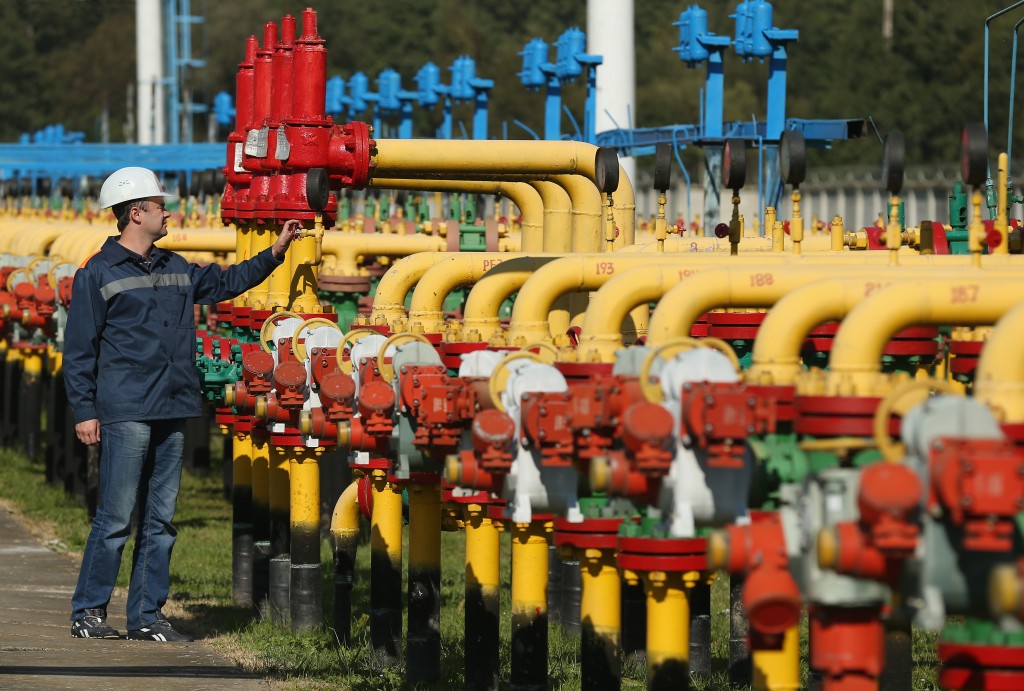The EU Commission recently released the first “Energy Security Stress Tests†in the wake of the Ukraine crisis. On its behalf, the European Network of Transmission System Operators for gas (ENTSOG) modeled two disruption scenarios for a period of one or six months:
- Complete halt of Russian gas imports to the EU
- Disruption of Russian gas imports via Ukraine
Unsurprisingly, the tests show that “a ‘prolonged’ supply disruption would have a substantial impact on the EU†affecting Eastern EU countries in particular due to their peculiar dependence on Russian gas stemming from their status as Soviet ‘satellites’ during the Cold War era. Perhaps the most important and for respective EU member countries costly finding of this report’s underlying scenario analysis is that Europe may be missing between 5 to 9 bcm of natural gas even if the EU as a whole reshuffles its supply mix:
“The model shows that in the different six month disruption scenarios the EU and the Energy Community Contracting Parties without Ukraine would, after reshuffling the supply mix, altogether still be missing between five and nine billion cubic meters (bcm) of gas. It also shows â€" assuming maximized use of infrastructure and normal market conditions â€" that when such six-month disruptions occur Russian volumes are replaced particularly through the import of additional volumes of [more expensive] LNG.â€
The report notes that “[a]lthough ENTSOG has not modelled the price effects of the supply disruptions, the need to replace volumes will be accompanied by price increases triggering the import of significant additional volumes of LNG. It is those price signals, to the extent allowed by the interconnection capacities or direct access to LNG import facilities that move gas to markets where it is most needed for the purposes of e.g. heating, electricity production. The higher prices will also trigger intense storage withdrawals and voluntary demand reduction.â€
Missing Gas Volumes per Affected Country
Source: ENTSOG via EU Commission
The following graphic shows how vanished Russian gas supplies could realistically â€" but only partially â€" be replaced if a disruption were to occur.
Replacement of Russian Gas in the 6-month Russian Supply Disruption Scenario
Source: ENTSOG via EU Commission
Note, the already projected dramatic increase in additional LNG procurement does not even address the anticipated natural gas supply shortfall. Moreover, the LNG cargoes in question would have to come from the spot market where Europe will have to compete with the comparatively ‘high-priced’ Asian market for the same cargoes. With regard to European LNG import terminals and available capacity as well as regional constraints, see Breaking Energy coverage here. Consequently, the report is right in urging EU countries to pool their energy resources and cooperate:
“In the absence of cooperation between Member States and of additional national measures, serious supply shortfalls of 40% or significantly more could materialise, at least towards the end of the 6-month disruption period, for Bulgaria, Romania, Serbia, the former Yugoslav Republic of Macedonia and Bosnia and Herzegovina (in both Ukraine transit and full Russian supply disruption scenarios).â€
Ultimately, such a disruption could serve as a test case for European solidarity and also give a glimpse of the prospects of EU-wide integration of the European energy market â€" a prerequisite for real European energy security.

Authored by:
Roman Kilisek
Roman Kilisek is a Global Energy & Natural Resources Analyst and a contributor at Breaking Energy. His writing and research focuses on global energy policy, energy infrastructure and trade, commodities, mining, global political risk and macroeconomics. He likes to draw on scenario development and analysis. He has a Master of Arts degree in international relations and diplomacy from Seton Hall ...



No comments:
Post a Comment